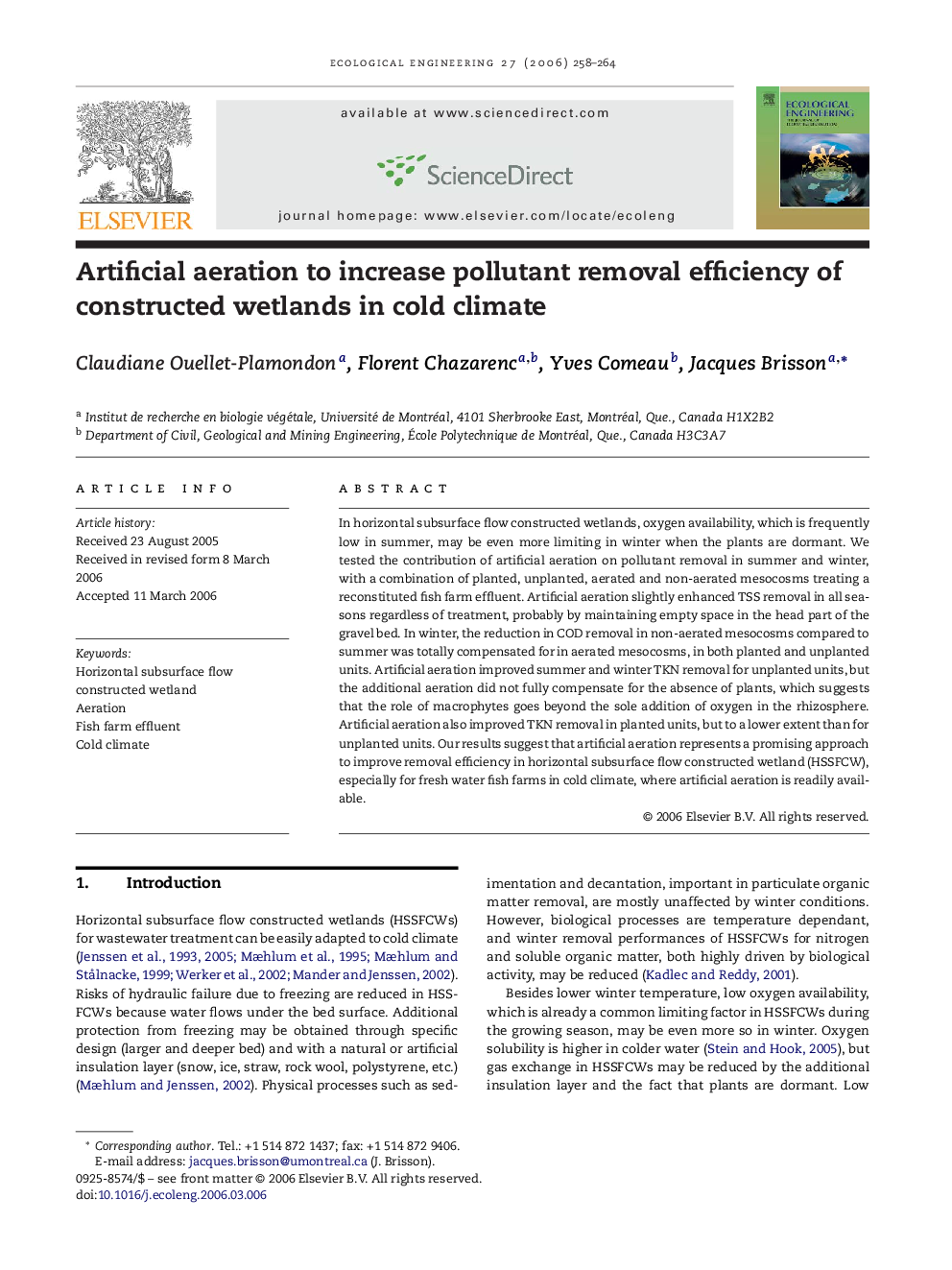| Article ID | Journal | Published Year | Pages | File Type |
|---|---|---|---|---|
| 4391301 | Ecological Engineering | 2006 | 7 Pages |
In horizontal subsurface flow constructed wetlands, oxygen availability, which is frequently low in summer, may be even more limiting in winter when the plants are dormant. We tested the contribution of artificial aeration on pollutant removal in summer and winter, with a combination of planted, unplanted, aerated and non-aerated mesocosms treating a reconstituted fish farm effluent. Artificial aeration slightly enhanced TSS removal in all seasons regardless of treatment, probably by maintaining empty space in the head part of the gravel bed. In winter, the reduction in COD removal in non-aerated mesocosms compared to summer was totally compensated for in aerated mesocosms, in both planted and unplanted units. Artificial aeration improved summer and winter TKN removal for unplanted units, but the additional aeration did not fully compensate for the absence of plants, which suggests that the role of macrophytes goes beyond the sole addition of oxygen in the rhizosphere. Artificial aeration also improved TKN removal in planted units, but to a lower extent than for unplanted units. Our results suggest that artificial aeration represents a promising approach to improve removal efficiency in horizontal subsurface flow constructed wetland (HSSFCW), especially for fresh water fish farms in cold climate, where artificial aeration is readily available.
